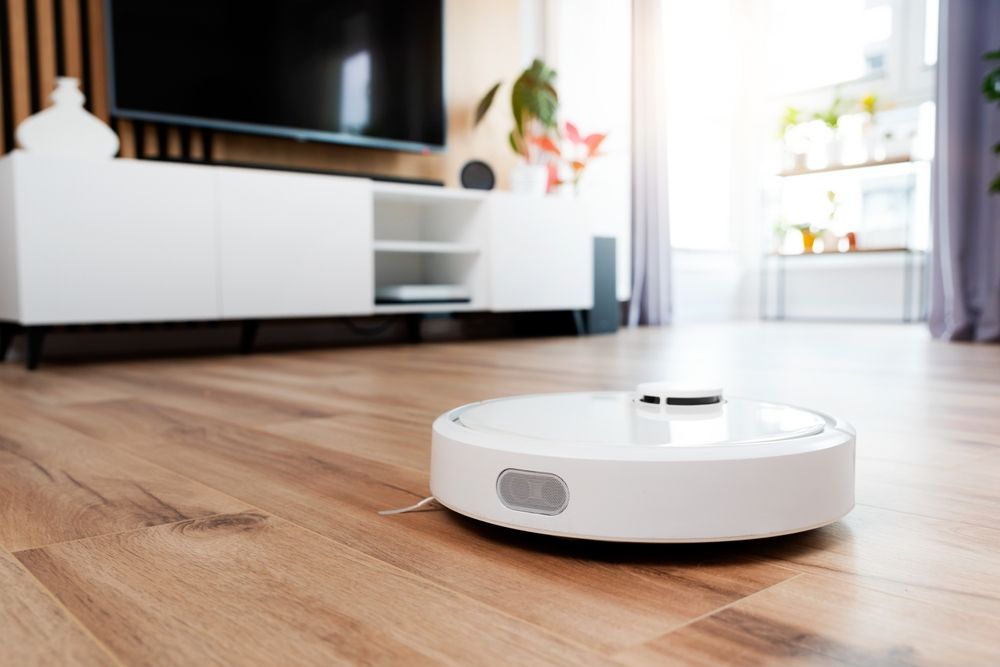Robot vacuums have gone from novelty to necessity for many homeowners. With busy schedules and the growing need for hands-free convenience, these compact cleaning machines offer a helpful way to keep floors tidy with minimal effort. But not all robot vacuums are created equal.
Before you invest in one, it’s important to understand what features matter most, what limitations to expect, and how to choose the right model for your space and lifestyle. Here’s everything you need to know before buying a robot vacuum.
1. Not All Robot Vacuums Are Created Equal
There’s a wide range of robot vacuums on the market—some basic and budget-friendly, others packed with advanced features and priced accordingly. The price typically reflects the vacuum’s navigation ability, cleaning performance, and smart features.
Cheaper models may bump around randomly and miss areas, while higher-end units use intelligent mapping and laser navigation for more precise, efficient cleaning. That doesn’t mean you have to splurge, but knowing what’s available helps you set realistic expectations.
2. Consider Your Floor Plan and Layout
Robot vacuums work best in open, uncluttered spaces. If you live in a small apartment or have wide hallways and minimal furniture, almost any robot vacuum will perform reasonably well. But for larger homes or rooms with lots of corners and obstacles, you’ll need a model with strong navigation and mapping capabilities.
Some vacuums use LiDAR or cameras to create a map of your home, allowing them to clean more efficiently and remember layouts from one session to the next. This feature is particularly useful for multi-room cleaning or setting virtual boundaries.
3. Battery Life Matters More Than You Think
Battery life directly affects how much area the robot can clean in one go. Most robot vacuums offer 60 to 120 minutes of runtime. For small spaces, that’s plenty. But for larger homes, look for a model that can return to its charging dock, recharge, and resume cleaning where it left off.
This “auto-resume” function ensures the vacuum completes the entire job without manual intervention, which is ideal if you want a set-it-and-forget-it experience.
4. Suction Power Varies—Especially for Carpets
Suction power is critical for cleaning performance, especially if your home has carpets or pets. Hard floors like wood or tile are relatively easy to clean, but deep-pile rugs or thick carpet require stronger suction.
Manufacturers use different methods to rate suction (like Pa or AW), which can be confusing. Generally, anything above 2000Pa is considered strong and capable of picking up dust, crumbs, and pet hair. Mid-range models typically handle low-pile rugs well, but heavy-duty cleaning may require a higher-end model.
5. Check the Dustbin Capacity
Because robot vacuums are compact, they also have smaller dustbins compared to upright vacuums. If you have pets or a dusty home, the bin may fill quickly, requiring frequent emptying.
Some premium models offer self-emptying bases, which automatically transfer the contents of the dustbin into a larger bag or container at the charging dock. These systems cost more upfront but reduce maintenance and are especially helpful in homes with kids or pets.
6. App Control and Smart Features Add Convenience
Most modern robot vacuums come with a companion app that allows you to control the device from your phone. Basic features include starting and stopping a cleaning session, setting a schedule, or switching cleaning modes.
Advanced features may include:
-
Custom room mapping and zone cleaning
-
No-go zones or virtual boundaries
-
Real-time tracking of cleaning progress
-
Integration with voice assistants like Alexa or Google Assistant
These features make it easier to automate cleaning and personalize how the vacuum navigates your home.
7. Edge and Corner Cleaning Isn’t Always Perfect
Robot vacuums are great for general cleaning, but they often struggle to reach edges and corners effectively. Their round shape makes it difficult to get into tight spaces, though many models now include side brushes that extend to sweep debris inward.
If edge cleaning is a priority, look for a vacuum with extra-long side brushes or D-shaped models designed to handle corners more efficiently. Still, a little manual spot-cleaning may occasionally be necessary.
8. Maintenance Is Required
Even though robot vacuums are hands-free in operation, they still require some upkeep to function properly. Regular maintenance includes:
-
Emptying the dustbin
-
Cleaning the filter and sensors
-
Checking the brushes for hair and debris
-
Replacing worn-out parts like filters and side brushes
Fortunately, most models alert you when maintenance is needed. Following a routine helps extend the life of the vacuum and ensures it continues to clean effectively.
9. Pet Owners Should Choose Wisely
If you have cats or dogs, a robot vacuum can be a lifesaver—but not all models handle pet hair equally well. Look for models with tangle-free rubber brushes, high suction power, and HEPA filters to reduce allergens.
Also, consider the noise level. Some robot vacuums can be surprisingly loud, which might scare skittish pets. Reading reviews from other pet owners can help you identify models that perform well in homes with furry friends.
10. Noise Levels Can Vary
Robot vacuums are quieter than traditional upright vacuums, but they’re not silent. Entry-level models may make more noise due to less efficient motors or basic components.
If you’re working from home or have young children, consider models marketed as “quiet” or check decibel ratings (typically between 55–70 dB). Noise may also vary by cleaning mode—some vacuums offer quiet or eco modes for lighter cleaning with reduced volume.



